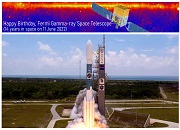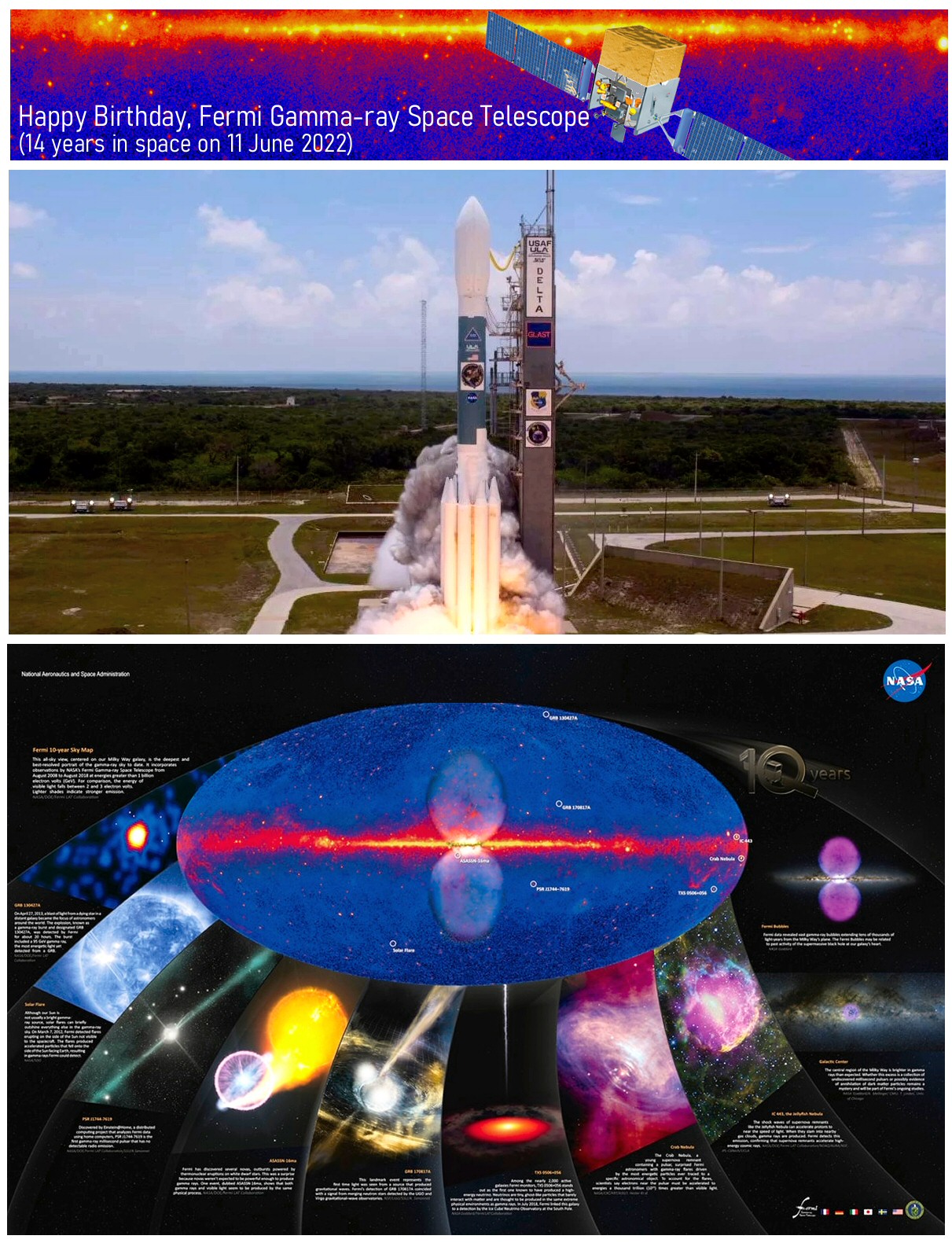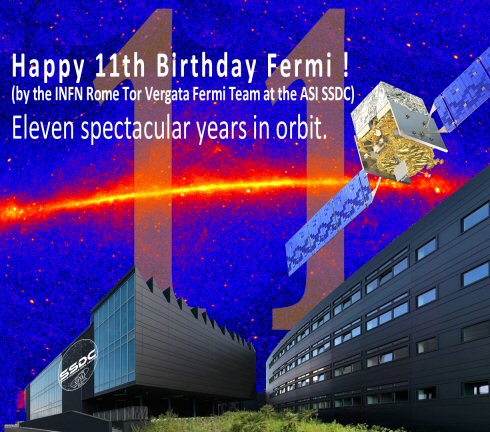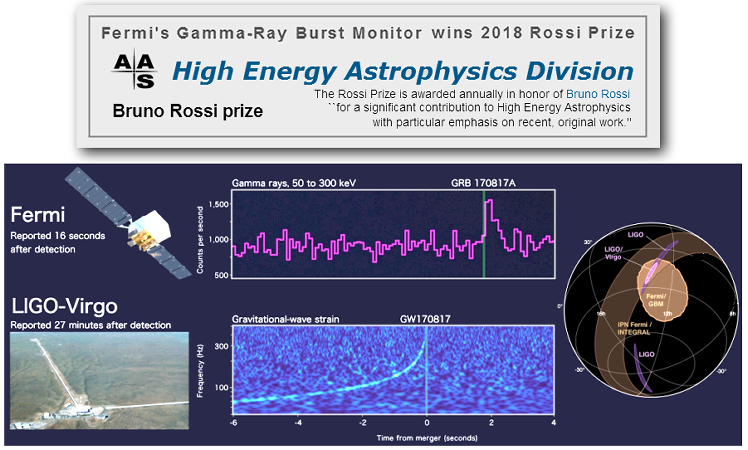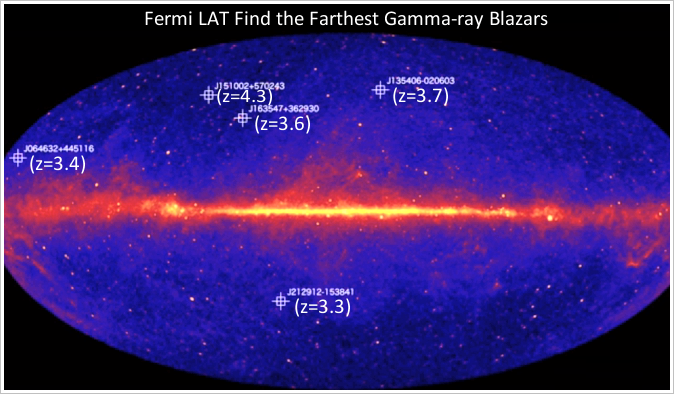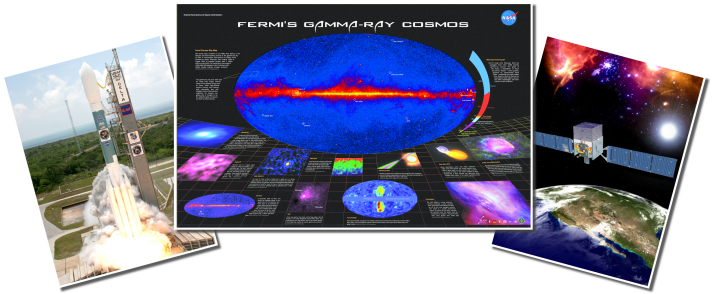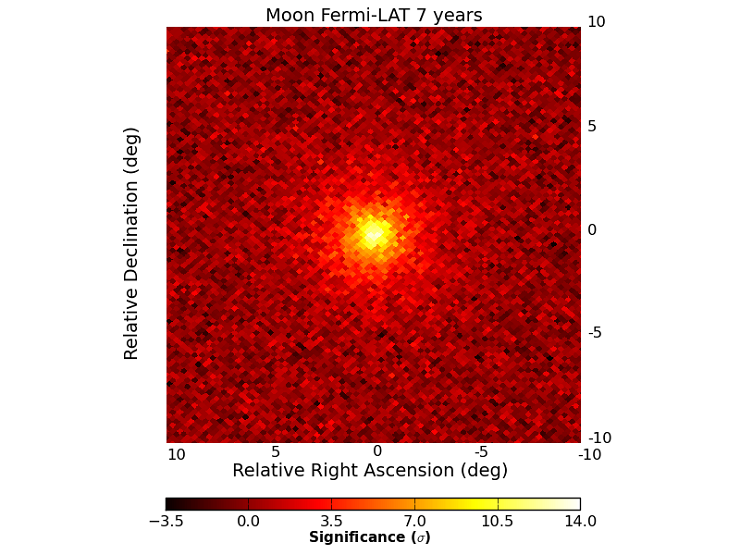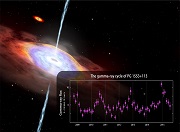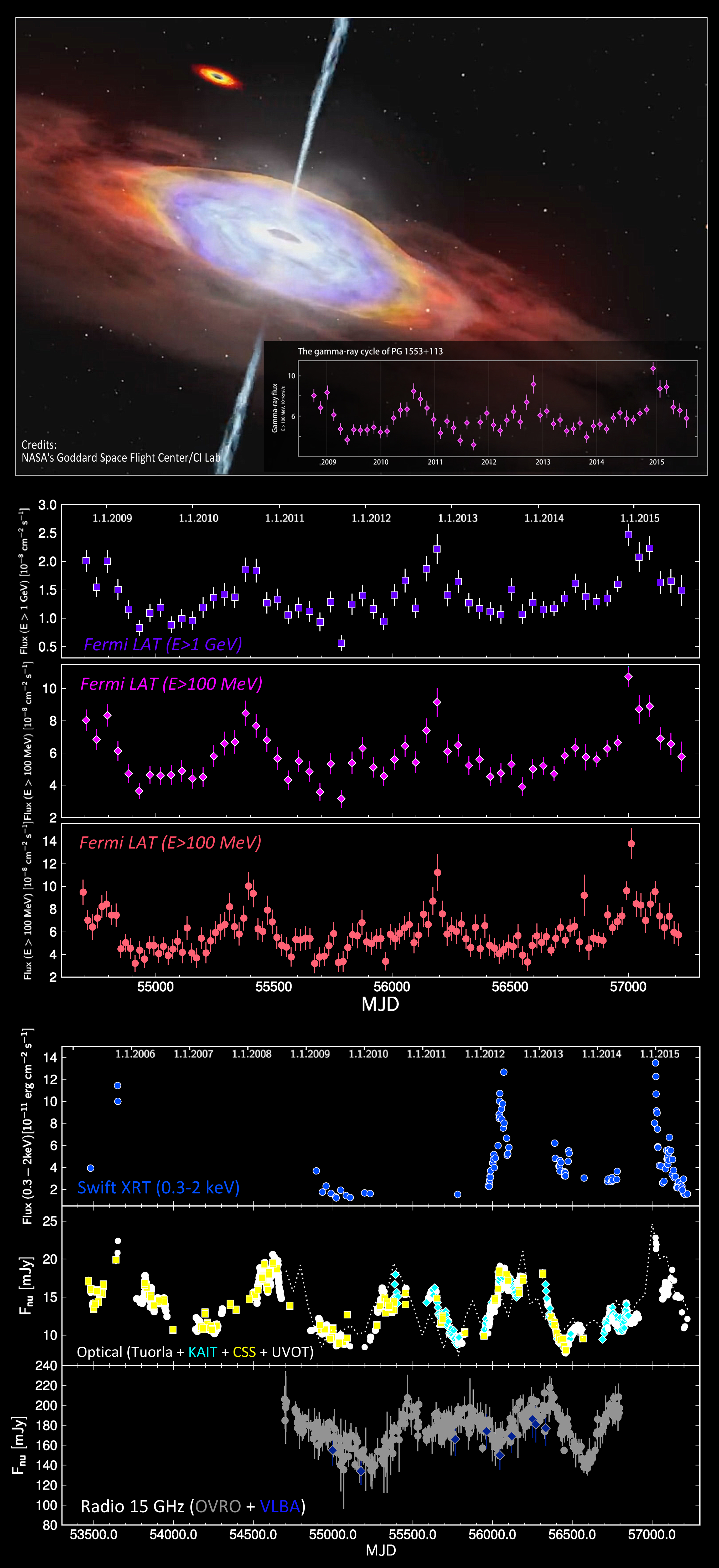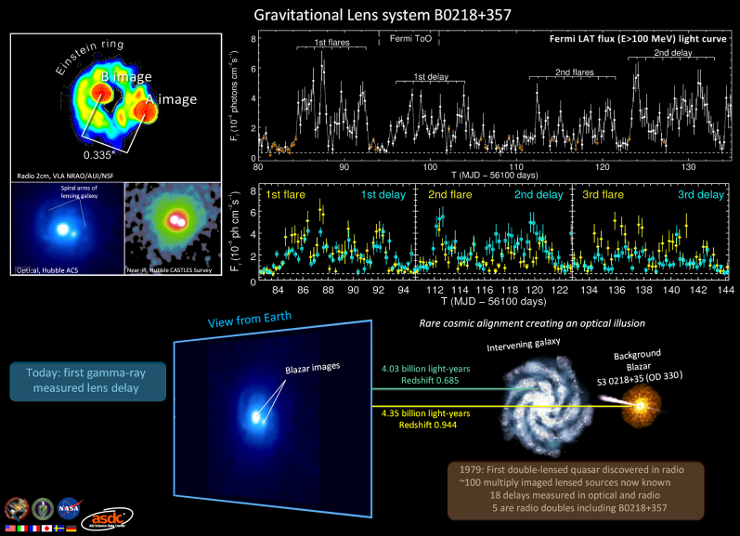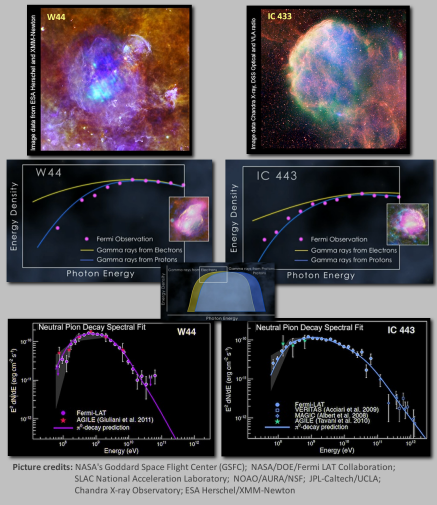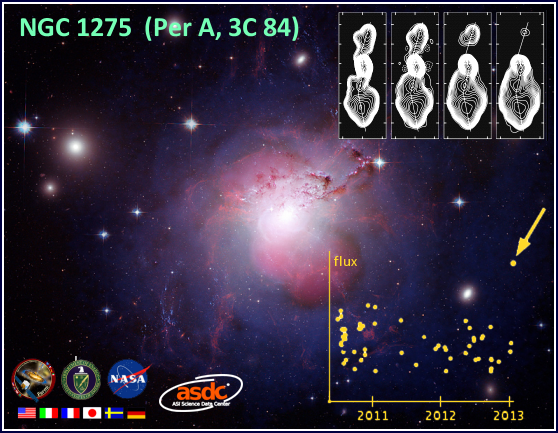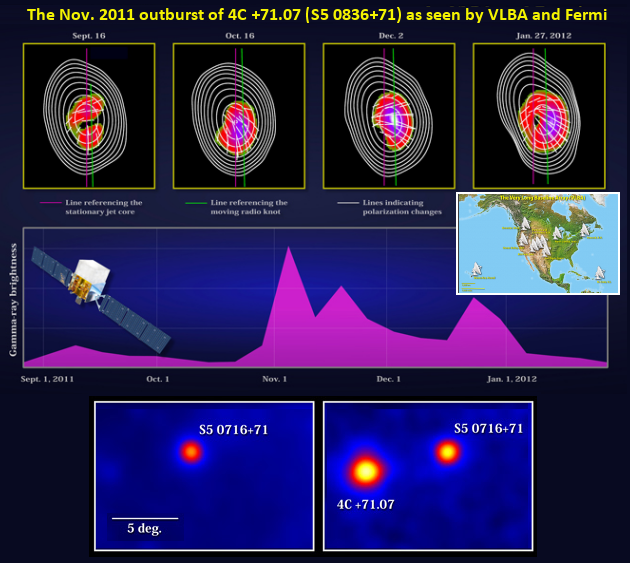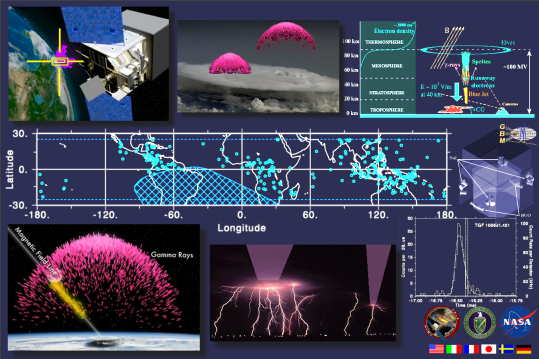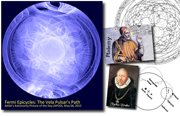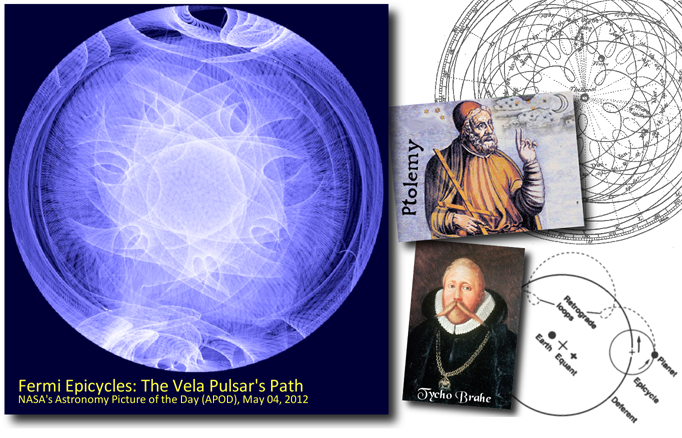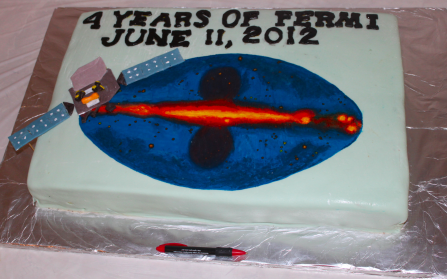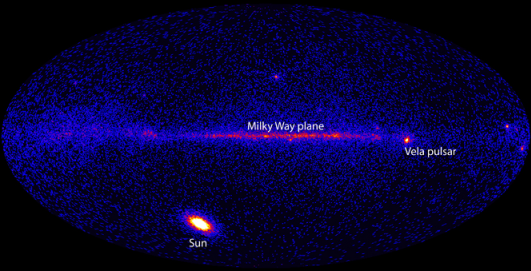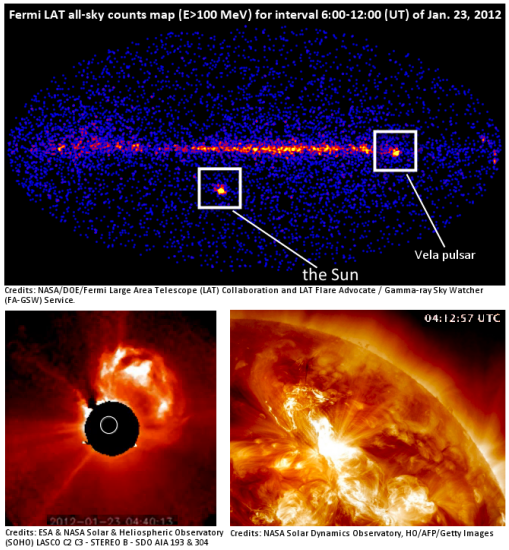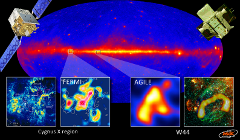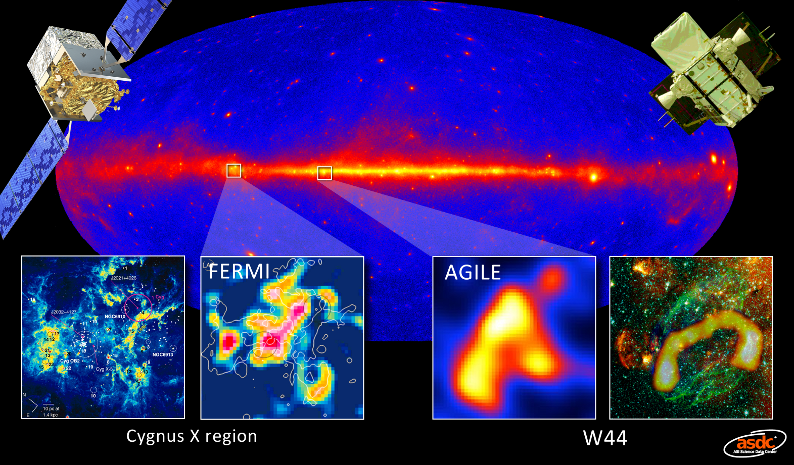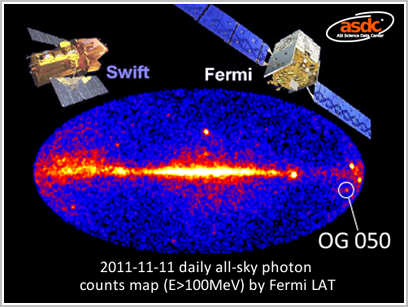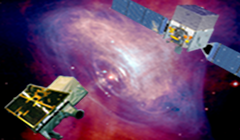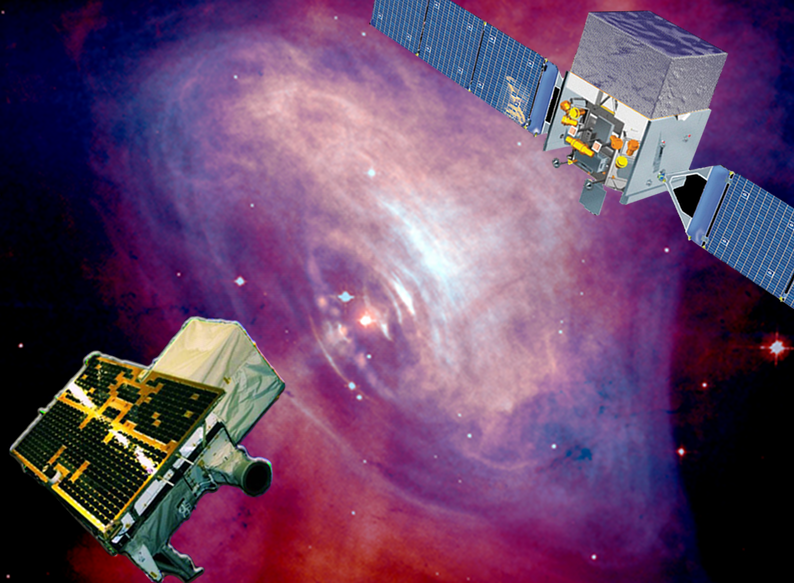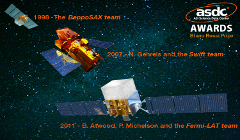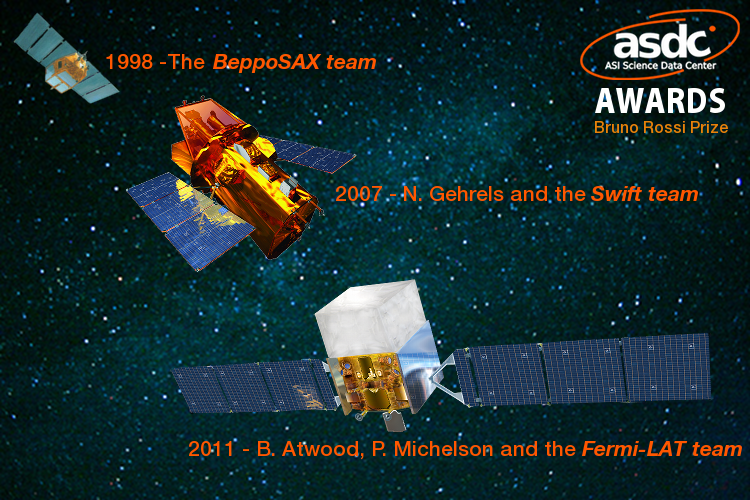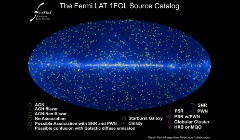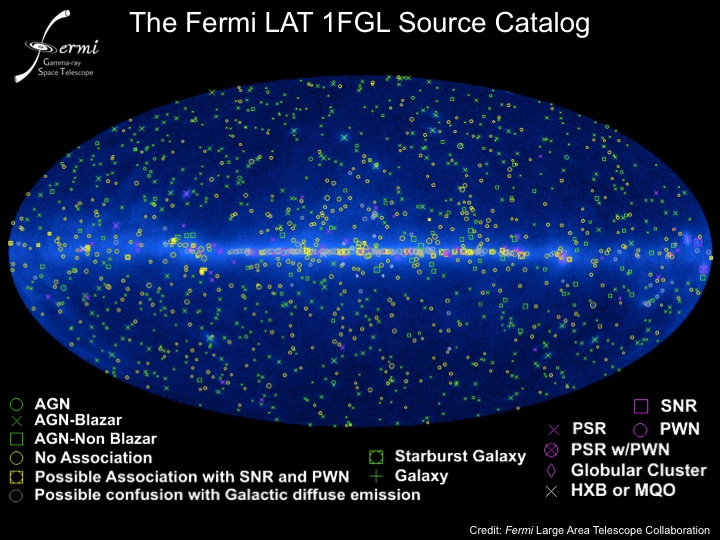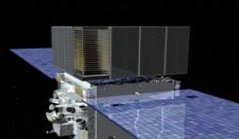Jun 13, 2013
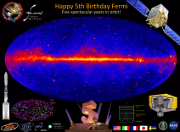 | Happy Fifth Birthday to Fermi. Five spectacular years in orbit!
From the Fermi LAT Project Scientist Julie McEnery:
"June 11, 2013 and 5 years since the launch of of GLAST, which was renamed Fermi shortly afterward. It has been a spectacular success and incredible journey across the high-energy Universe with Fermi.
In the past five years, 1130 refereed papers have used Fermi data or results, with a cumulative 26038 citations. The three most-cited are the LAT instrument paper, the first electron spectrum paper, and the first LAT source catalog. In addition to writing lots of papers, we are using Fermi data to produce important, high impact papers. Ranked by citation count in astrophysics, Fermi papers (sometimes several) are in the top 10 in 2009, 2010, and 2012. Fermi results are clearly having a significant impact.
Many of these published results are made possible with data (and the work of scientists) from different wavebands. Among many examples, the Pulsar Search Consortium has timed over 700 pulsars in support of Fermi. Swift has followed up with X-ray and UV observations of hundreds of LAT flaring sources and dozens of LAT GRBs. Hundreds of Fermi-LAT sources are monitored in radio, X-ray and optical wavebands (see http://fermi.gsfc.nasa.gov/ssc/observations/multi/programs.html).
These results have been widely disseminated to the public. In addition to many press releases by university and international partners, NASA has supported 5 media telecons, 22 press releases and 15 features. These stories have been accompanied by 39 videos and supporting animations, which have had enthusiastic reception. In 2012 alone, the first year for which we have a report from the NASA Goddard Scientific Visualization Services server, Fermi videos exceeded 3.4 million views, with many, many more views via YouTube.
Among the most popular are:
Einstein's Cosmic Speed Limit: http://svs.gsfc.nasa.gov/vis/a010000/a010500/a010510/index.html
Terrestrial Gamma-ray Flashes Create Antimatter,
http://www.youtube.com/watch?v=lXKt7UVjd-I&list=PL9900C9C6BBDA9551&ind
Fermi discovers giant gamma-ray bubbles in the Milky Way
http://svs.gsfc.nasa.gov/vis/a010000/a010600/a010688/index.html
The spectacular work with Fermi has been noted by our peers in the science community. Scientists working with Fermi, and the Fermi Large Area Telescope team have received several prominent awards: the Bruno Rossi prize (twice), the Warner prize, the Panofsky prize and the Duggal Prize (also twice).
The LAT stands on the eve of 300 billion LAT event triggers (299,864,708,616 as of 15:13 UTC today). The LAT Instrument Science Operations Center (ISOC) have used 1200 CPU-years to process over 2 PB of data; an additional 1700 CPU-years have been devoted to Monte Carlo simulations to support understanding of the performance of the LAT and the LAT data. The ISOC has sent 1,789,794,674 events to the FSSC of which 268,324,179 are in the photon database (the remainder are in the extended database).
The Fermi Science Support Center (FSSC) at GSFC have served about 20 TB of LAT data for a total of 159,879 queries, in addition to a large number of direct downloads of the weekly data files. For the GBM, over 67 TB of data have been downloaded by the GRB and Solar communities. In addition to serving data, the FSSC have worked to ensure that people are able to fully use them. The FSSC have answered over 2400 requests to the Fermi Helpdesk and participated in 23 analysis workshops and schools in 15 different institutions in 11 cities and 3 countries. This is a lower limit thanks to additional externally-hosted workshops run by instrument team members.
Participation in Fermi by the scientific community has steadily grown since launch. To date, 1269 individual guest investigators have participated in the six cycles of the Fermi Guest Investigator program. This is a lower limit on the number of scientists using Fermi data, as many additional people are supported by agencies in other countries. Fermi of course has made lots and lots of observations. While collecting high quality science data, the spacecraft has spent 96% of its observing time in survey mode, 3% in pointed mode, and the remainder in maneuver mode. Fermi has made over 90 autonomous repoints, 31 nadir observations and 12 targeted observations at 8 objects (3 with modified rocking: PSR B1259, the Sun, and Mrk 421; and 9 pointed mode observations: Sun, Crab nebula, Cyg X-3, 3C 454.3, Galactic Center, and S3 0218+35).
The GBM have triggered onboard on 1151 GRB, 370 TGF, 522 solar flares and 192 magnetar outbursts. Many additional gamma-ray transients have been found in searches of the downlinked data, especially after we transitioned to routinely collecting higher time-resolution GBM data in July 2010.
The LAT monitored source list now numbers 105 sources, with publicly-available lightcurves for each. The LAT Flare Advocates have written 207 Fermi-sky blog entries (http://fermisky.blogspot.com/), and written 239 LAT ATels (https://www-glast.stanford.edu/cgi-bin/pub_rapid/) since July 24, 2008.
Not to be outdone on the communications front, the Flight Operations Team have generated over 3000 presentations for weekly and quarterly status meetings and the ISOC have written many weekly entries in the LAT diary. Most importantly, over 100 students have written a thesis based on Fermi data.
It's also important to continue to have a functioning observatory to work with, to that end in the 27537 orbits of Fermi the Fermi observatory the FOT have sent 10206 commands to the observatory and scheduled 18877 KU contacts to downlink the science data. We have had one collision avoidance maneuver (successful!), and one successful mission extension, hopefully the first of many.
Starting the sixth year of the Fermi mission, the spacecraft and instruments are continuing to work well, the scientific output from the mission is continuing to increase. We cannot predict the discoveries to come, but we can look forward to them."
All of the achievements have been made possible by the hard work of a worldwide Fermi community and with the support of the National Aeronautics and Space Administration (NASA) and the Department of Energy (DoE) in United States and agencies in France, Germany, Italy, Japan, and Sweden. The Fermi LAT collaboration in particular is supported in both the development and the operation of the LAT as well as scientific data analysis by NASA and DoeE in USA, the Commissariat à l'Energie Atomique and the Centre National de la Recherche Scientifique / Institut National de Physique Nucléaire et de Physique des Particules in France, the Agenzia Spaziale Italiana (ASI) and the Istituto Nazionale di Fisica Nucleare in Italy, the Ministry of Education, Culture, Sports, Science and Technology (MEXT), High Energy Accelerator Research Organization (KEK) and Japan Aerospace Exploration Agency (JAXA) in Japan, and the K.A. Wallenberg Foundation, the Swedish Research Council and the Swedish National Space Board in Sweden. Additional support for science analysis during the operations phase is gratefully acknowledged from the Istituto Nazionale di Astrofisica (INAF) in Italy and the Centre National d' 'Etudes Spatiales in France.
The ASI Science Data Center (ASDC) is contributing to the Fermi mission by maintaining a mirror archive of the LAT high-level science data, now loaded with Pass7 class events and holding about 268 million of gamma-ray photons collected between August 4, 2008 and June 11, 2013. ASDC is contributing to the Fermi mission in development of quick-look analysis software, interactive data exploration and analysis interfaces through online web tools, software support for publication and maintaining of gamma-ray source catalogs and LAT science data distribution, and providing support to users for data reduction methods and analysis. The Fermi team at ASDC is involved in technical and science activities within AGN, GRB, and Catalogs LAT science groups, participating in LAT catalog releases, source identification analysis, in exploitation of LAT data in connection to multi-mission archives also collecting and analyzing multifrequency data, and performing source population studies, and spectral and temporal variability analysis. The participation to the distinct LAT instrument and science duty service shifts, the set of new international collaborations and the communication of analysis result, the support in organization of events and conferences and public outreach activities are also tasks of the Fermi team at ASDC.
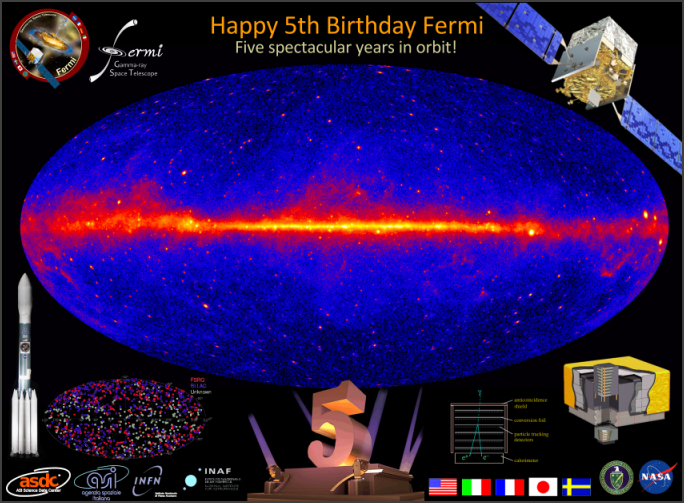
Links:
Fermi ASDC site:
http://fermi.asdc.asi.it
Fermi ASI page:
http://www.asi.it/en/activity/high_energy/glastfermi
http://www.asi.it/it/attivita/astrofisica/fermiglast
Fermi NASA official site:
http://fermi.gsfc.nasa.gov/
Fermi Science Support Center (FSSC) site:
http://fermi.gsfc.nasa.gov/ssc/
Fermi NASA mission site:
http://www.nasa.gov/fermi/
Fermi Large Area Telescope (LAT) instrument and collaboration page:
http://www-glast.stanford.edu/
Fermi Gamma-ray Burst Monitor (GBM) instrument and collaboration page:
http://gammaray.msfc.nasa.gov/gbm/
Fermi Education and Public Outreach site:
http://fermi.sonoma.edu/
Fermi LAT Instrument Science Operations Center (ISOC):
http://glast-isoc.slac.stanford.edu
Fermi LAT project site:
http://www-glast.slac.stanford.edu/
|
